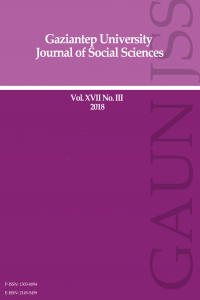Abstract
William Shakespeare’s “Taming of the
Shrew” questions the social world order that includes an exhibition of the
Elizabethan norms including patriarchal authority. The subject
matter of the play is a disputable topic that presents a depiction of the
gender roles. The ambiguous paths about Shakespeare’s “Taming of the Shrew” revolves
around the ideas whether the play is about female’s being surrendered to the
male hegemony in the patriarchal society or showing their power in a mutual
relationship. Throughout the centuries, both the text and the perfomance of the
play is evaluated in different ways by the critics, producers and directors. Almost
all interpretations add different dimensions to this controversial aspect of
the play. Caroline Byrne’s 2016 Globe Theatre production will
be evaluated before passing onto Shakespeare’s own text since it is significant
to evaluate how a contemporary female director handles this problematic issue
of the “taming” theme in its re-presentation of the the ongoing discussions
about Shakespeare’s portrayal of a “tamed shrew.” Then, the text will be examined
in its depiction of the gendered identities.
Keywords
References
- Crocker, H. (2003). Affective resistance: performing passivity and playing a-part in the Taming of the Shrew. Shakespeare Quarterly, 54, 2; 142.
- De Wachter, R. (2016). Power and gender in “The Taming of the Shrew”. 15.11.2017. https://www.bl.uk/shakespeare/articles/power-and-gender-in-the-taming-of-the-shrew.
- Montrose, L. (1996). Shakespeare, the stage, and the state. SubStance 25, 80, 46-67. Shakespeare, W. (1996). Taming of the Shrew. The Complete Works of William Shakespeare. London: Wordsworth Editions, 329-358.
- Tillyard, E.M. (1992). W. Shakespeare’s Early Comedies. London: Athlone Press.
Abstract
William Shakespeare’in “Hırçın Kız” adlı oyunu, ataerkil otoriteyi
içeren Elizabeth dönemi kaidelerinin sergilendiği sosyal dünyayı sorgular. Oyunun
konusu, tartışmalı bir konu olan cinsiyet rollerinin tasviridir. Shakespeare’in
“Hırçın Kız” oyununun belirsiz yönleri, oyunun ataerkil toplumda, kadının erkek
egemenliğine teslim olup olmaması ya da karşılıklı bir ilişkide gücünü gösterip
gösterememesi ile ilgilidir. Yüzyıllar boyunca, oyunun hem metni hem de
performansı eleştirmenler, yapımcılar ve yönetmenler tarafından farklı
şekillerde yorumlanmıştır. Hemen hemen hepsi de oyunun bu tartışmalı yönüne
farklı boyutlar katmışlardır. Shakespeare’in metnine geçmeden önce, Caroline
Bryne’ın 2016 Globe Tiyatrosu yorumu değerlendirilecektir çünkü bir kadın
yönetmenin “evcilleştirme” denen bu problemli konuyu, Shakespeare’in
“evcilleştirilmiş şirret” tasvirinin yeniden sunumunu nasıl ele aldığını görmek
önem arz eder. Daha sonra ise oyun metni cinsiyetlendirilmiş kimlikler
bağlamında incelenecektir.
Keywords
References
- Crocker, H. (2003). Affective resistance: performing passivity and playing a-part in the Taming of the Shrew. Shakespeare Quarterly, 54, 2; 142.
- De Wachter, R. (2016). Power and gender in “The Taming of the Shrew”. 15.11.2017. https://www.bl.uk/shakespeare/articles/power-and-gender-in-the-taming-of-the-shrew.
- Montrose, L. (1996). Shakespeare, the stage, and the state. SubStance 25, 80, 46-67. Shakespeare, W. (1996). Taming of the Shrew. The Complete Works of William Shakespeare. London: Wordsworth Editions, 329-358.
- Tillyard, E.M. (1992). W. Shakespeare’s Early Comedies. London: Athlone Press.
Details
| Primary Language | English |
|---|---|
| Subjects | Creative Arts and Writing |
| Journal Section | Literature |
| Authors | |
| Publication Date | July 11, 2018 |
| Submission Date | November 25, 2017 |
| Acceptance Date | July 4, 2018 |
| Published in Issue | Year 2018 Volume: 17 Issue: 3 |


